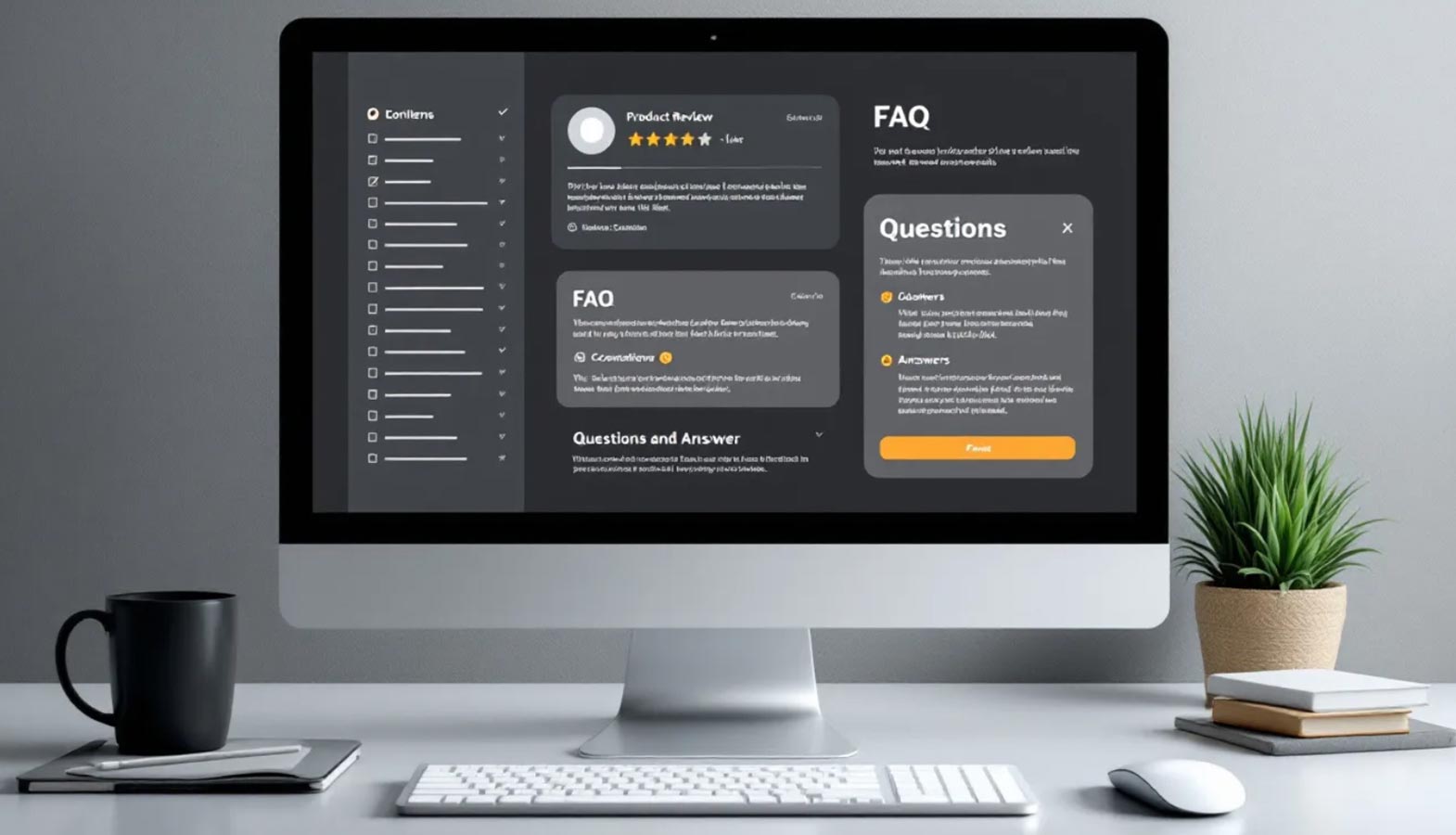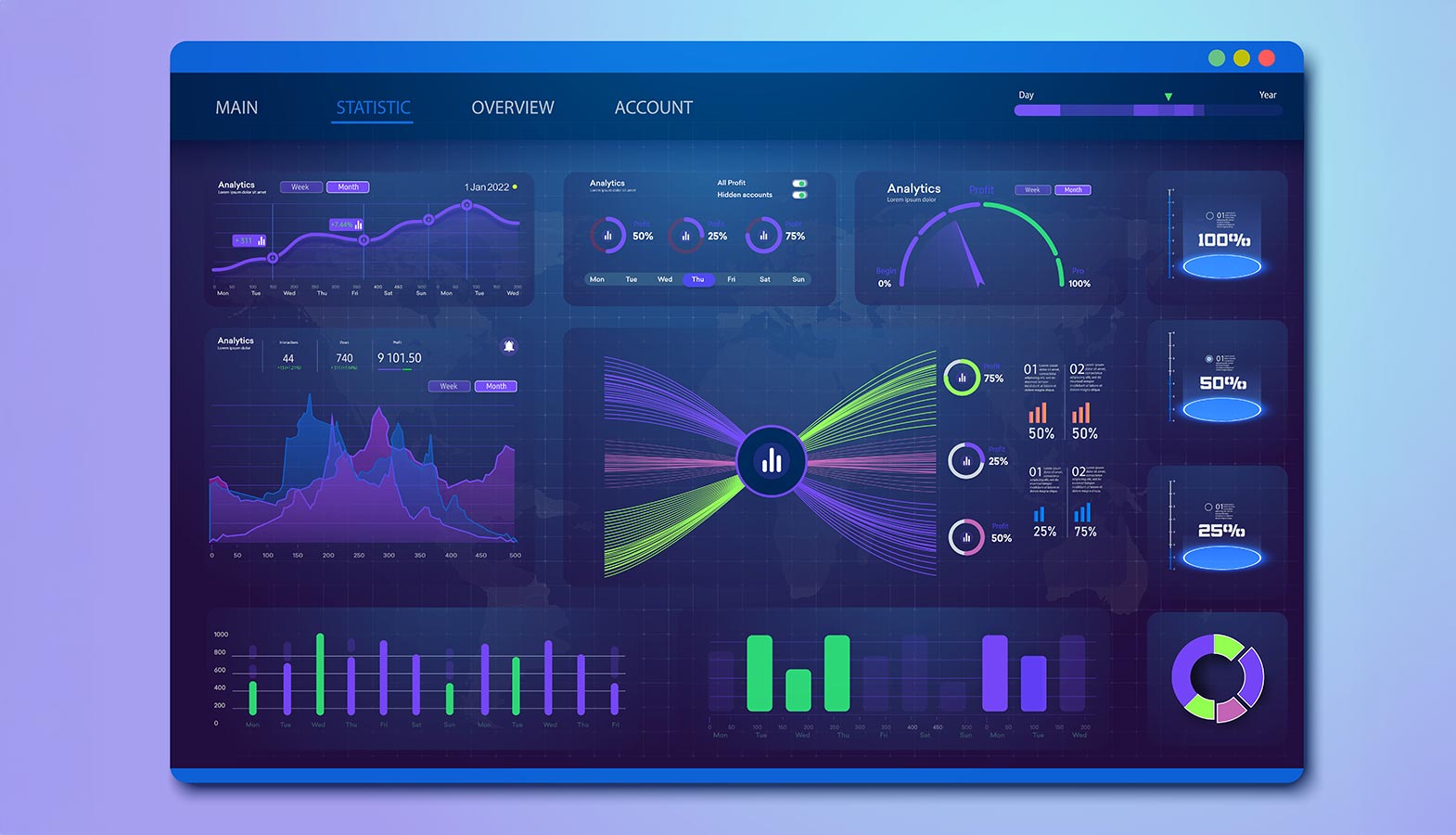Use LLM Seeding to Get Ahead of Your Competition
While 71% of consumers now use AI tools for answers without clicking through to websites, most brands are still playing by old seo ranking rules. This shift represents a fundamental change in how users search and discover information, creating what experts call the AI search era. AI answers are generated by synthesizing information from multiple sources, so brands must monitor, analyze, and influence their presence within these responses to ensure they are cited as authoritative sources.
Traditional search engines drive direct traffic to your website, but AI-generated answers often synthesize information from multiple sources without sending visitors to the original content creators. This means your brand can be mentioned and recommended by AI systems without generating any measurable traffic through Google Search Console.

The disconnect between Google rankings and LLM citations creates both challenges and opportunities. How a brand shows up in AI-generated search responses is critical for brand visibility, as being cited by AI tools can drive awareness and influence purchasing decisions even if you don’t rank highly in traditional search. A small software company might rank on page three for “project management tools” but still get consistently cited by LLMs as a top recommendation when users ask AI systems for software suggestions. Meanwhile, brands ranking number one for competitive keywords might never appear in AI responses at all.
This comprehensive guide will teach you how to implement an effective LLM seeding strategy that gets your brand mentioned by AI models like ChatGPT, Claude, and Perplexity. For example, Google’s AI overviews use information from various sources to generate detailed answers and recommendations, so seeding your content for these overviews is essential to influence AI outputs. You’ll learn the specific content formats, platforms, and optimization techniques that generate maximum LLM pickup and create citation-worthy content that AI systems trust and reference.
LLM seeding is about influencing large language model outputs and citations to ensure your brand is referenced in AI-generated answers.
As you explore the opportunities and challenges of the AI search era, it’s important to track and improve your LLM visibility so your brand is cited in AI-generated responses and remains competitive in this new landscape.
What is LLM Seeding and Why It Matters Now
LLM seeding is the strategic placement of content where large language models like ChatGPT, Claude, and Perplexity source information for AI-generated responses. Unlike traditional seo that focuses on ranking high in search results, LLM seeding aims to get your brand mentioned and cited when AI systems generate answers for user queries. LLM optimization is a key strategy for enhancing brand visibility in large language models, ensuring your content is surfaced in AI-generated search results.
The practice emerged as AI models began powering more search experiences and customer interactions. When someone asks an AI tool “What’s the best email marketing software?” or “How do I improve team collaboration?”, the AI system draws from its training data and real-time retrieval sources to create an answer. Brands that have effectively seeded content in these sources get mentioned, while others remain invisible. Large language model optimization is crucial for being trusted and cited by AI models, as it directly impacts whether your content is selected for inclusion in AI-generated answers.
Statistics show this trend accelerating rapidly. Search patterns indicate users increasingly prefer direct answers from AI systems over clicking through multiple websites. This creates a zero-click environment where brand exposure happens through AI mentions rather than website visits. The shift means traditional metrics like organic traffic and search rankings tell only part of the story.
Real examples demonstrate this disconnect clearly. A cybersecurity startup might never crack the first page of Google for “network security tools,” but it consistently appears in ChatGPT’s recommendations when users ask about protecting small business networks. Meanwhile, established companies with strong domain authority might rank well for competitive keywords but never get cited by AI systems because their content isn’t optimized for LLM pickup.
This represents a fundamental shift from traffic-focused to citation-focused content strategy. Instead of optimizing primarily for human searchers clicking through to your website, successful brands now create content that AI systems recognize as authoritative and worth citing. Content quality is crucial for being recognized as authoritative and worth citing by AI systems. The goal becomes getting mentioned in ai responses rather than just driving clicks.
Understanding AI Responses
To succeed with LLM seeding, it’s crucial to understand how AI responses are generated and what makes content citation-worthy. Large language models like ChatGPT, Claude, and Perplexity analyze user queries using advanced algorithms, then draw on vast training data to craft relevant, accurate answers. This training data includes everything from authoritative websites and forums to industry publications and review platforms.
AI engines prioritize content that is well-structured, clearly attributed, and easy to parse. Creating citation worthy content means focusing on clarity, logical flow, and providing direct answers to common questions. AI tools and overviews play a key role in shaping which sources are referenced, so understanding their preferences is essential.
To increase your chances of being cited in ai generated answers, ensure your content is formatted for easy extraction—use bullet points, clear headings, and concise explanations. By aligning your content strategy with the way ai engines process and select information, you can position your brand as a go-to source in ai responses across multiple platforms.
How Large Language Models Source Their Training Data
Understanding where AI models get their training data reveals the foundation of any successful LLM seeding strategy. Large language models rely on several distinct data sources, each with different characteristics and citation patterns that smart brands can leverage for AI answers.
Pre-training data sources form the core knowledge base of AI systems and generative engine optimization. Common Crawl web scraping provides broad internet content, capturing billions of web pages in standardized formats. Wikipedia content represents approximately 22% of training data for most major AI models, making it one of the most influential sources for factual information and entity recognition.
Reddit discussions contribute significantly to conversational training data, helping AI systems understand natural language patterns and user preferences. Stack Overflow technical content provides structured problem-solving information that AI tools frequently reference when answering technical questions. LLMs frequently reference expert quotes and personal insights from these platforms when generating summaries or answers. These platforms offer high-quality, community-moderated content that AI systems trust for citations.

Licensed partnerships represent another crucial data source. Reuters, Bloomberg, and other news organizations provide structured, fact-checked content through direct licensing agreements. These partnerships ensure AI systems have access to current, authoritative information beyond what’s freely available through web crawling.
Real-time retrieval sources complement pre-training data with current information. Review platforms like G2, Capterra, and TrustPilot provide product comparisons and user feedback that AI systems access when making purchasing decisions. Industry publications offer expert analysis and trend information that gets cited in professional contexts.
Quality signals determine which sources get prioritized for citations. AI crawlers evaluate factors like content credibility, author expertise, publication consistency, and cross-referencing patterns. Content that demonstrates clear attribution, logical flow, and supporting evidence receives higher priority in AI responses.
Different AI systems prefer different source types, creating opportunities for targeted seeding strategies. ChatGPT tends to favor well-structured educational content and comprehensive guides. Claude shows a preference for balanced analysis and multiple perspectives on complex topics. Perplexity frequently cites recent news articles and industry reports for current events and trends.

Content Formats That Generate LLM Citations
Not all content formats are equally likely to get cited by LMS. Understanding which formats generate the most AI mentions helps focus your content strategy on high-impact approaches that maximize brand visibility in LLM visibility.
Structured “best of” lists with clear selection criteria consistently generate llm citations. These lists work because they provide comparative information that AI systems can easily extract and reference. Include specific ratings, detailed comparison criteria, and transparent methodology to increase citation likelihood. The key is creating citation-worthy content that stands out from generic listicles through original data and clear evaluation frameworks.
First-person product reviews with detailed testing information perform exceptionally well in LLM responses. AI systems favor reviews that include balanced pros and cons, specific use cases, and measurable outcomes. Write reviews that include testing methodology, screenshots or examples, and honest assessments of limitations alongside benefits. Tool reviews that are well-structured and use the SoftwareApplication schema make it easier for AI systems to extract and display insights, further increasing citation potential.
FAQ-style content matching natural language queries generates frequent AI citations because it directly answers user questions. Structure content around common customer questions using conversational language that mirrors how people actually ask AI tools for information to increase your chances of being cited by LLMs. Each answer should be concise but comprehensive, providing immediate value while demonstrating expertise. Providing topical depth—going beyond surface-level explanations—improves the likelihood of being cited by AI systems.
Comparison tables with clean structure and clear verdicts excel at generating AI citations for decision-making queries. Create comparison content that evaluates options across multiple relevant criteria, includes pricing information where appropriate, and provides clear recommendations for different use cases. AI systems frequently extract this information when users ask for product or service comparisons.
Opinion pieces with unique industry insights supported by evidence and clear takeaways get cited when AI systems need expert perspectives. Focus on providing original analysis rather than rehashing common industry talking points. Support opinions with data, examples, and logical reasoning that AI systems can reference and attribute.
Free tools, templates, and frameworks with descriptive titles and usage context generate citations when AI systems recommend resources to users. Create genuinely useful resources with clear value propositions and detailed explanations of their applications. The surrounding context and description often get cited even when the tool itself requires a download.
Visual content with detailed captions, alt text, and surrounding context can generate citations through the descriptive text rather than the visual elements themselves. While ai systems can’t directly cite images, they frequently reference the textual content that explains and contextualizes visual information.
The Role of AI Overviews
AI overviews, such as Google’s AI Overviews, are transforming the way users interact with search engines in the ai search era. These overviews provide users with comprehensive, direct answers—often including step by step instructions—right at the top of the search results, reducing the need to click through to individual websites. As a result, traditional SEO strategies that focus on backlinks and rankings are becoming less effective for driving traffic and brand visibility.
LLM seeding offers a new path forward by focusing on creating content that is optimized for ai engines and designed to be included in ai overviews. This means prioritizing clear, well-structured information that answers user queries directly and is easy for ai systems to extract and summarize. By understanding how ai overviews select and present information, businesses can adapt their content strategy to ensure their brand is featured in ai generated responses, maintaining visibility even as user behavior shifts away from traditional search results.
High-Impact Platforms for LLM Seeding
Smart brands focus their LLM seeding efforts on platforms where AI systems are most likely to find and cite content. Platform selection significantly impacts citation frequency, making strategic publishing decisions crucial for maximizing brand visibility in AI responses.
Third-party publishing platforms like Medium, Substack, and LinkedIn offer high citation potential due to their clean layouts and consistent quality standards. These platforms are considered LLM magnets because their clean layout, clear headings, and consistent quality make them attractive to large language models for citation. They provide built-in credibility signals that AI systems recognize, including author verification, consistent formatting, and editorial oversight. Publishing content on these platforms often generates more AI citations than publishing identical content on brand-owned websites.
Industry publications and trade magazines that LLMs recognize as authoritative sources provide excellent citation opportunities. Target publications that cover your industry comprehensively and maintain high editorial standards. Guest posting on these platforms builds entity authority while placing content where AI systems actively look for expert information.
Community forums like Reddit, Quora, and Stack Overflow generate significant AI citations because they contain authentic user-generated content and real problem-solving discussions. Participate genuinely in these communities by providing helpful answers and insights rather than promotional content. AI systems frequently cite well-reasoned forum responses when answering similar questions.

Review and comparison sites, including G2, Capterra, and TrustRadius, are frequently cited for decision-making queries. These platforms provide structured product information that AI systems easily extract and reference. Maintain complete, up-to-date profiles on relevant review platforms and encourage genuine customer reviews that include specific details about use cases and outcomes.
Editorial microsites positioned as independent publications covering broad industry topics offer opportunities for comprehensive content that gets cited across multiple query types. These sites work best when they provide genuinely helpful information rather than obviously promotional content. Focus on educational content that establishes expertise while naturally mentioning your brand in appropriate contexts.
Technical platforms like GitHub discussions benefit developer-focused brands seeking citations in technical contexts. Contribute to open-source projects, maintain detailed documentation, and participate in technical discussions that demonstrate expertise. AI systems frequently reference GitHub content when answering programming and technical implementation questions.
Social platforms with structured, searchable content, like LinkedIn and Twitter, can generate citations when content includes clear formatting and valuable insights. Use bullet points, numbered lists, and clear headings to make content easily extractable by AI systems. Focus on sharing unique insights and data rather than general industry commentary.
The key to platform success lies in understanding each platform’s audience and content standards. Tailor content style and format to match platform expectations while maintaining consistent brand messaging across all channels. This approach maximizes both platform engagement and AI citation potential.
Platform-Specific Strategy for LLM Seeding
Maximizing your brand’s presence in ai generated answers requires a platform-specific approach to LLM seeding. Each ai platform—whether it’s ChatGPT, Claude, or Perplexity—has its own preferences for content sources, formats, and semantic structure. For example, ChatGPT and Claude often prioritize trusted sources like Wikipedia and respected niche publications, while Perplexity favors content with clear attribution and well-organized information.
To achieve maximum llm pickup, tailor your content creation and distribution strategies to the unique requirements of each platform. This might involve:
- Creating content in formats favored by specific ai platforms, such as comparison tables, FAQ-style articles, or in-depth guides.
- Participating in niche forums, industry events, and community discussions where ai engines frequently source information.
- Publishing in niche publications and authoritative industry outlets to build credibility and increase the likelihood of being cited.
- Ensuring your content features clear attribution, logical flow, and a semantic structure that makes it easy for ai systems to extract and reference.
By understanding and adapting to the nuances of each ai platform, you can significantly improve your brand’s visibility in ai responses and establish a strong presence across the evolving landscape of ai search.
Technical Optimization for AI Citation
Technical optimization for AI citations requires different approaches than traditional seo. ai systems parse content differently than human readers, making specific technical elements crucial for maximizing citation likelihood and ensuring accurate brand representation in AI responses.
Schema markup implementation provides structured data that AI systems can easily understand and extract. FAQ schema helps AI tools identify question-and-answer content for direct citation in conversational responses. HowTo schema structures step-by-step instructions that AI systems reference when providing procedural guidance. Dataset schema helps AI tools understand research findings and statistical information that often gets cited in analytical responses.
Structured data serves as an AI interface, making content more accessible to machine learning systems. Entity-focused markup helps AI systems understand relationships between people, organizations, and concepts. Machine-readable summaries provide condensed information that AI tools can quickly extract and reference. Implement JSON-LD structured data consistently across all content to improve AI parsing accuracy.
Content structure for extraction requires specific formatting that AI systems can easily process. Clear H1s and descriptive subheadings help AI tools understand content hierarchy and topic organization. Executive summaries at the beginning of long-form content provide condensed information that AI systems often cite directly. Numbered points and bullet points make information easily extractable for AI responses.

Evidence attribution within content increases citation credibility with AI systems. Include clear source citations for statistics and claims, use proper formatting for quotes and references, and provide publication dates for time-sensitive information. AI systems favor content that demonstrates thorough research and proper attribution.
Semantic HTML and clean code structure help AI crawlers understand and extract content accurately. Use proper heading hierarchy (H1, H2, H3) to organize information logically. Implement clean URL structures that reflect content organization. Avoid excessive JavaScript that might interfere with AI crawler access.
Mobile-friendly, fast-loading pages ensure AI crawlers can access content efficiently. Optimize images with descriptive alt text that provides context that AI systems can understand and reference. Implement proper internal linking to help AI systems understand relationships between different pieces of content on your site.
Metadata optimization includes descriptive titles and meta descriptions that accurately represent content topics. Use clear, descriptive headings that include relevant keywords naturally. Ensure alt text for images provides meaningful context rather than keyword stuffing. This comprehensive approach helps ai systems understand and accurately represent your content in citations.
Building Entity Authority for LLM Recognition
Building entity authority helps ensure your brand appears in AI responses across different contexts and query types. AI systems rely on entity recognition to understand and cite brands consistently, making entity authority development crucial for long-term LLM seeding success.
Consistent NAP (Name, Address, Phone) data across all platforms and listings establishes basic entity recognition for AI systems. Maintain identical business information across Google My Business, LinkedIn, industry directories, and all other online profiles. Inconsistent entity information confuses AI systems and reduces citation likelihood.
Cross-platform entity reinforcement involves positioning your brand consistently across multiple authoritative sources. Wikipedia entries, LinkedIn company pages, industry directories, and social profiles should all present identical brand information and positioning. This consistency helps AI systems understand and trust your brand entity.
Co-citation strategy involves positioning your brand alongside established industry leaders in various contexts. Participate in industry research reports, expert roundups, and collaborative content that mentions your brand in the same context as recognized market leaders. AI systems often cite entire groups of related entities when answering broad industry questions.

PR-first approach focuses on targeting industry research reports, expert roundups, and university studies that AI systems frequently reference. Academic and research citations carry significant weight with AI systems because they represent vetted, authoritative information. Invest in thought leadership that gets referenced in research contexts.
Authority signals include comprehensive author bios, reputable source citations, and clear editorial policies. Establish team members as recognized experts in your field through speaking engagements, published research, and industry recognition. AI systems frequently consider author authority when determining citation credibility.
Citation portfolio development focuses on high-authority mentions rather than volume. A single mention in a Harvard Business Review article or MIT research paper carries more weight with AI systems than dozens of low-quality directory listings. Focus efforts on securing citations from sources that AI systems already trust and reference frequently.
Track brand mentions across different contexts to understand how AI systems currently perceive your entity. Use tools like Brand24 and Google Alerts to monitor brand mentions and identify opportunities for entity reinforcement. This ongoing monitoring helps identify gaps in entity authority that need attention.
Building entity authority requires patience and consistent effort across multiple channels. The goal is to create a comprehensive digital presence that AI systems recognize as authoritative and worth citing across various query types and contexts.
Measuring LLM Seeding Success
Measuring LLM seeding success requires new metrics beyond traditional seo rankings and traffic analysis. Since AI citations don’t always generate direct traffic, brands need sophisticated approaches to track brand mentions and evaluate AI visibility across different platforms and use cases.
Brand mentions tracking in AI tools involves systematically testing AI systems with relevant queries to monitor citation frequency and context. Use incognito mode when testing ChatGPT, Claude, Perplexity, and other AI platforms to avoid personalized results. Create standardized query lists that represent common customer questions and track whether your brand appears in responses over time.
Direct traffic analysis provides insights into AI-driven brand discovery that doesn’t show up in traditional analytics. Compare Google Analytics direct traffic trends with declining organic clicks to identify potential AI-driven brand searches. Look for increases in more branded searches that correlate with AI citation improvements, as users often search specifically for brands they discover through AI responses.
Unlinked brand mentions monitoring using tools like Semrush Brand Monitoring and Google Alerts helps track brand visibility across the web ecosystem that feeds AI training data. Monitor mentions on platforms that AI systems frequently access, including forums, review sites, and industry publications. These mentions often contribute to AI citations even when they don’t include direct links.

Citation frequency and quality scoring involve evaluating both how often your brand gets mentioned and in what contexts. Track whether brand mentions appear as primary recommendations, secondary options, or brief mentions. Monitor the accuracy of brand information in AI responses and identify patterns in context and positioning.
Specialized tools, including Profound, Semrush AI SEO Toolkit, and Brand24, provide comprehensive AI visibility tracking. These platforms monitor brand mentions across AI systems and provide analytics specifically designed for generative engine optimization. Use these tools to track competitive positioning and identify content gaps that affect AI citation performance.
Competitive analysis helps understand market share in AI-generated responses across different query types. Test competitor mentions alongside your own brand to understand relative positioning in AI responses. Identify topics where competitors consistently get cited while your brand doesn’t appear, revealing opportunities for targeted content creation.
Establish baseline measurements before implementing LLM seeding strategies to accurately measure improvement over time. Track key metrics including citation frequency, brand mention context, competitive positioning, and correlation with business outcomes like lead generation and brand awareness surveys.
The key to successful measurement lies in understanding that AI citations often influence user behavior in ways that don’t immediately show up in traditional analytics. Users might discover your brand through AI responses and then research directly or make purchases through offline channels. This makes comprehensive tracking across multiple touchpoints essential for accurate roi assessment.
Get a quote for a hand-crafted AI-optimized website for your brand.
Get a Quote
Common LLM Seeding Challenges and Solutions
Even well-executed LLM seeding strategies face common challenges that require systematic solutions. Understanding these obstacles and their remedies helps brands avoid common pitfalls and maintain consistent AI visibility over time.
Poor data quality issues arise when brand information appears inconsistently across different sources that feed AI training data. AI systems may cite outdated product information, incorrect pricing, or obsolete company details. Solve this by conducting regular audits of brand information across all platforms and updating inconsistent data promptly. Create a master document with current brand information and use it to maintain consistency across all channels.
Limited domain coverage occurs when brands focus LLM seeding efforts too narrowly, missing opportunities to get cited in adjacent topic areas. Expand content coverage across multiple relevant topics that your target audience searches for, not just primary product categories. Create educational content that establishes expertise in broader industry contexts while naturally incorporating brand mentions.
Source bias problems emerge when AI systems favor certain types of sources over others, potentially excluding valuable brand content. Diversify content sources and avoid over-reliance on single platforms for LLM seeding. If AI systems consistently cite academic sources for your industry, prioritize getting mentioned in research reports and scholarly articles rather than focusing exclusively on commercial content.
Inconsistent entity information creates confusion for AI systems trying to understand and cite your brand accurately. Maintain brand consistency across all mentions and citations by using identical company names, descriptions, and key messaging. Create detailed brand guidelines that external contributors can follow when writing about your company.
Attribution and context issues occur when AI systems mention your brand but provide incorrect context or misattribute information. Monitor AI responses regularly to identify context problems and address them through additional content that clarifies your brand positioning. Create clear, factual content that provides proper context for AI systems to reference accurately.
Monitoring and adjustment challenges arise from the difficulty of tracking AI citation performance across multiple platforms and use cases. Implement systematic monitoring processes using both automated tools and manual testing. Create standardized query lists for regular testing and establish clear criteria for evaluating citation quality and context.
Content scalability becomes an issue when manual content creation can’t keep pace with the volume needed for comprehensive LLM seeding. Develop content frameworks and templates that can be efficiently adapted across different platforms and topics while maintaining quality and consistency. Focus on creating pillar content that can be repurposed and distributed across multiple channels.
Platform dependency risks emerge when brands rely too heavily on specific platforms for AI citations. Diversify publishing strategies across multiple high-authority platforms to reduce risk from platform changes or algorithm updates. Maintain owned media properties alongside third-party publishing to ensure some level of control over content availability.
Long-term sustainability requires ongoing effort and adaptation as AI systems evolve and change their source preferences. Build LLM seeding into regular content strategy processes rather than treating it as a one-time project. Stay informed about changes in AI system training data sources and adjust strategies accordingly.
The Future of LLM Seeding and AI Search
The future of LLM seeding will be shaped by emerging AI technologies and changing user behavior patterns that are already beginning to transform how people discover and interact with brands online. Understanding these trends helps brands prepare strategies that remain effective as AI search continues evolving.
Multimodal search evolution represents a major shift as AI systems increasingly integrate visual, voice, and text search capabilities by 2026. This means brands need to prepare content that works across different input types and modalities. Visual content with comprehensive descriptions, audio content with detailed transcripts, and video content with structured metadata will all contribute to AI citation opportunities.
Entity authority is becoming the new PageRank as AI systems replace link analysis with citation patterns and entity recognition. Brands that establish comprehensive entity authority across multiple contexts and sources will maintain advantages in AI citations. This shift makes traditional domain authority less important than entity recognition and consistent brand positioning across authoritative sources.

AI-powered search traffic projections indicate a 25% traffic shift to AI interfaces by 2026, fundamentally changing how brands need to think about online visibility. This transition requires balancing traditional search optimization with AI citation strategies. Brands that adapt early will capture market share as competitors struggle to adjust to new visibility requirements.
Platform-specific optimization strategies will become more important as different AI systems develop distinct preferences and capabilities. Google AI Overviews prioritize different content types than ChatGPT or Claude, requiring tailored approaches for each platform. Understanding these differences allows brands to optimize content specifically for different AI systems.
Integration with traditional seo requires balancing Google rankings with AI citation strategies without compromising either approach. Successful brands will develop integrated strategies that serve both human searchers and AI systems effectively. This means creating content that ranks well in traditional search results while also being optimized for ai extraction and citation.
Long-term brand positioning in an ai-driven discovery landscape requires thinking beyond current ai capabilities to prepare for future developments. Brands that establish strong entity authority and comprehensive content coverage now will be better positioned as ai systems become more sophisticated and widely adopted.
The evolution toward ai mediated information discovery creates both challenges and opportunities for brand visibility. Smart brands are already adapting their content strategy to thrive in this new environment, while others risk becoming invisible as ai systems increasingly control how consumers discover and evaluate options.
Investment in llm seeding today pays dividends as ai adoption accelerates and traditional search behavior continues shifting toward ai-powered interfaces. The brands that understand and implement effective llm seeding strategies now will maintain competitive advantages as ai search becomes the dominant discovery mechanism for most consumer and business purchasing decisions.
LLM Seeding Ensures A Bright Future For Your Brand
LLM seeding represents a fundamental shift in how brands achieve online visibility and authority. As ai systems increasingly mediate information discovery, traditional approaches focused solely on search engine rankings miss critical opportunities for brand exposure through ai citations.
The strategies outlined in this guide provide a comprehensive framework for getting your brand consistently mentioned by ai models. From understanding how AI systems source their training data to implementing technical optimizations that maximize citation likelihood, each element contributes to building lasting ai visibility.
Success in llm seeding requires consistent effort across multiple channels and content formats. The brands that start implementing these strategies now will build significant advantages as ai search continues growing and traditional organic traffic patterns continue evolving toward ai-mediated discovery.
The future belongs to brands that understand both traditional search optimization and ai citation strategies. By implementing comprehensive llm seeding approaches alongside existing seo efforts, you can ensure your brand remains visible and authoritative as the digital landscape continues its rapid transformation toward ai-powered information access.
Start with one high-impact platform and gradually expand your llm seeding efforts across multiple channels. The compound effects of consistent ai citation building will generate long-term brand visibility that continues growing as ai adoption accelerates across all industries and use cases.
Frequently Asked Questions (FAQs) About LLM Seeding
LLM seeding is the strategic placement of content where large language models (LLMs) like ChatGPT, Claude, and Perplexity source their information. It is important because it helps your brand get mentioned and cited in AI-generated answers, increasing brand visibility in the AI search era even if you don’t rank highly in traditional search engines.
Traditional SEO focuses on ranking high in search engine results to drive clicks and traffic. LLM seeding, on the other hand, focuses on getting your brand cited in AI-generated responses, which may not always include direct links or generate immediate website traffic but build brand awareness and trust through AI mentions.
Content formats that generate the most AI citations include structured “best of” lists, first-person product reviews, FAQ-style content, comparison tables, opinion pieces with clear takeaways, and free tools or templates. These formats are easy for AI systems to parse, extract, and cite in their responses.
High-impact platforms for LLM seeding include third-party publishing sites like Medium and LinkedIn, industry publications, community forums such as Reddit and Quora, review and comparison sites like G2 and Capterra, editorial microsites, technical platforms like GitHub, and social media channels with structured content.
Measure success by tracking brand mentions in AI tools, analyzing direct traffic trends alongside organic search declines, monitoring unlinked brand mentions, and using specialized AI visibility tracking tools like Semrush AI SEO Toolkit or Brand24. Regularly test AI platforms with relevant queries to assess citation frequency and context.
While LLM seeding primarily builds brand visibility through AI mentions rather than direct clicks, it can indirectly increase website traffic by driving more branded searches and direct visits as users seek out your brand after encountering it in AI-generated answers.
Yes. Implementing schema markup, using semantic HTML, ensuring mobile-friendliness, optimizing page speed, and providing descriptive alt text for images all help AI crawlers understand and extract your content accurately, increasing the chances of being cited.
Regularly updating content to maintain factual accuracy, relevance, and topical depth is essential. Frequent updates signal to AI systems that your content is current and reliable, which improves citation credibility and reduces the risk of hallucinations in AI responses.
Common challenges include inconsistent brand information across sources, limited domain coverage, poor data quality, source bias, attribution errors, and platform dependency. Addressing these requires consistent brand messaging, diversified content distribution, regular audits, and ongoing monitoring.
LLM seeding complements traditional SEO by focusing on AI-driven brand visibility. Integrate it into your content strategy by creating citation-worthy content, distributing it across AI-friendly platforms, optimizing technical elements, and tracking AI mentions to ensure your brand remains authoritative in both search engines and AI-generated responses.




